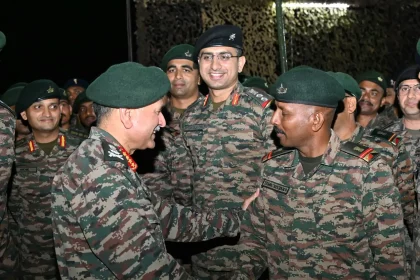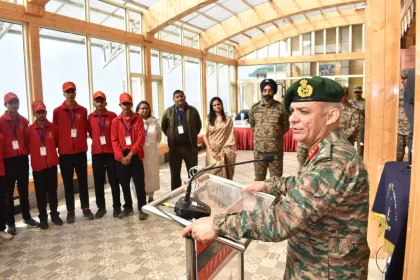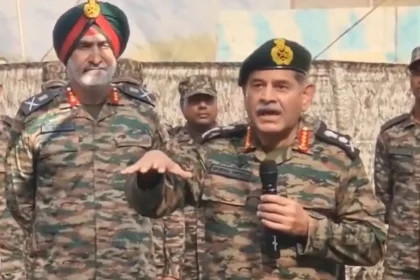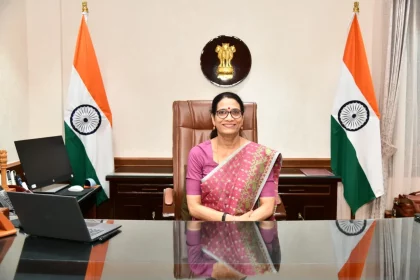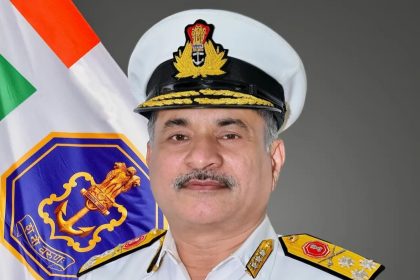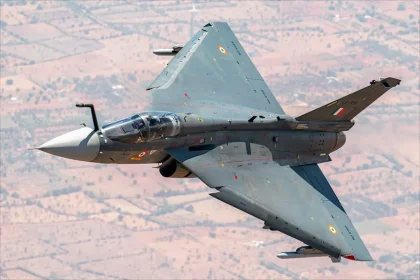General Upendra Dwivedi Reviews Operational Preparedness at Bikaner Military Station
He concluded his visit by encouraging all stakeholders to continue their joint efforts towards ensuring national security and strengthening India’s…
Major General Ajay Feroz Shah Inspires Gujjar & Bakarwal Students During Visit to Army Training Command Shimla
The students’ visit to ARTRAC is a step forward in empowering them to become responsible citizens and active participants in…
“Will Erase From Map if Needed”: Army Chief General Upendra Dwivedi Issues Stern Warning to Pakistan
General Dwivedi signals no restraint in future operations against terror infrastructure.
Smt Shobha Gupta Assumes Charge as Director General of Defence Estates
Veteran IDES officer takes charge of DGDE, overseeing 18 lakh acres of defence land.
Vice Admiral Rahul Vilas Gokhale Assumes Charge as Chief of Staff, Western Naval Command
Veteran officer and Navigation specialist takes charge of key naval formation.
HAL to Conduct Maiden Flight of First TEJAS MK-1A Fighter Jet from Nashik Unit on October 17
HAL’s Nashik facility to roll out first TEJAS MK-1A as India boosts indigenous fighter production.

